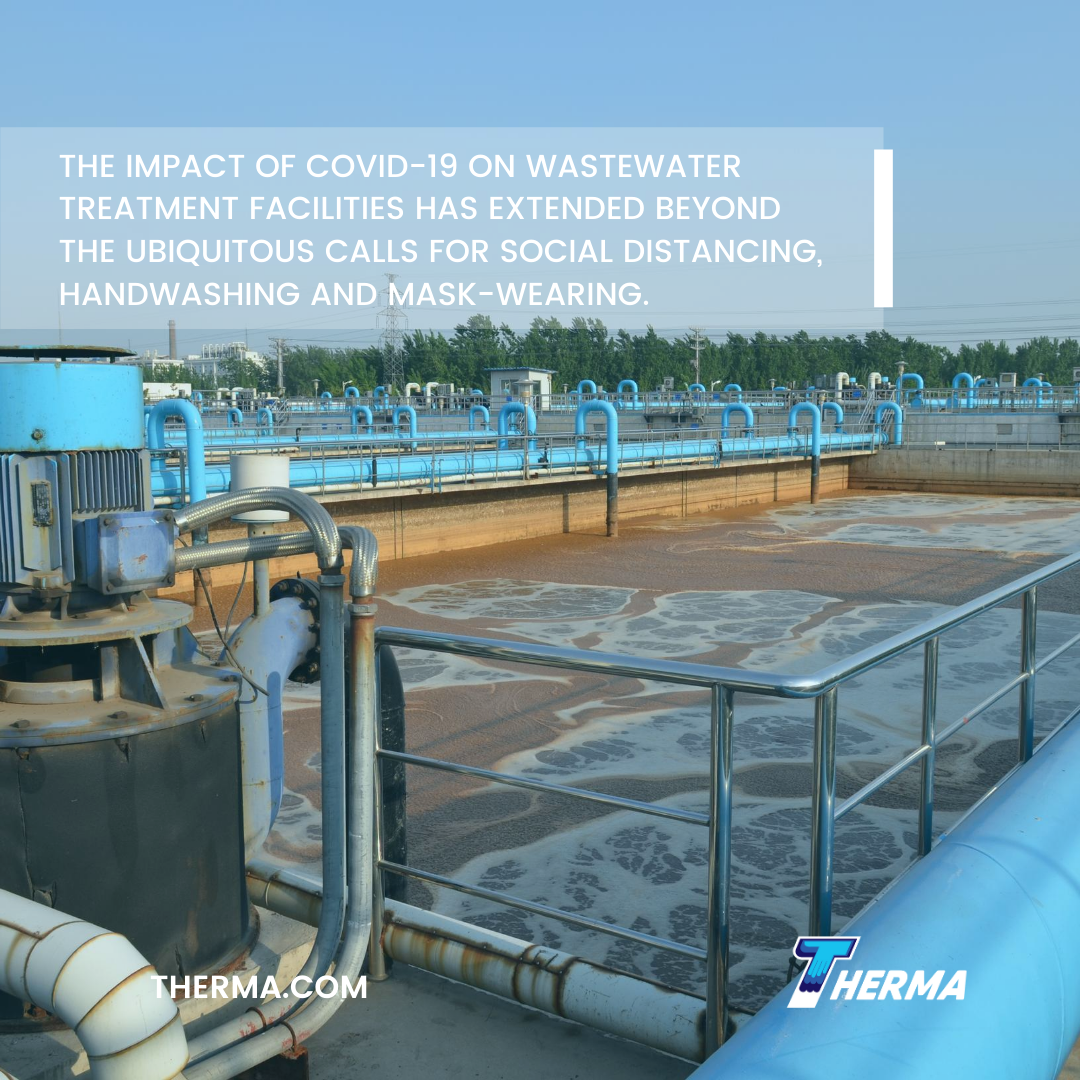Clean, accessible water is a critical part of our everyday lives. The current COVID-19 pandemic is changing not only the way Americans do business; it’s impacting essential services, including wastewater treatment.
Wastewater Treatment C& COVID-19
While there are gaps in available information in the ongoing process of COVID-19 research (due to its novel nature), a significant amount of information is available on infectious human coronaviruses, the group of viruses to which COVID-19 belongs.
Research indicates that coronaviruses may be present in raw wastewater when collected from an area experiencing an active infection within a population. Virus detection has been present in stools and urine from infected individuals 100+ days following initial infection, where 20-40% of those with the virus experienced gastrointestinal symptoms. Additionally, the virus has been reported to survive in hospital wastewater for a period of 2 to 3 days. Wastewater treatment plants, therefore, receiving hospital or other isolation center effluence may find higher concentrations of viruses, including COVID-19.

Risk of Transmission
While the risk of COVID-19 transmission from wastewater is unknown, the risk is believed to be low based on existing data from previous coronavirus outbreaks, including Severe Acute Respiratory Syndrome (SARS) and Middle East Respiratory Syndrome (MERS). Standard filtration and disinfection based water treatment methods should remove or inactivate the virus that causes COVID-19.
Further data suggests current standard municipal wastewater chlorination practices may also successfully inactivate coronaviruses.
The CDC continues to review all available COVID-19 transmission data. At present, the risk of sewage-based virus transmission is believed “low.” To date, there are no reported cases of wastewater transmission of COVID-19.
COVID-19 Impact on Wastewater Treatment Facilities
The current COVID-19 pandemic surge has seen countless businesses and public spaces close down or limit their offerings to help limit the spread of the coronavirus. Despite shutdown, water and wastewater workers continue to work on the front line, to ensure Californians have wastewater treatment services during a national health crisis.
The impact of COVID-19 on wastewater treatment facilities has extended beyond the ubiquitous calls for social distancing, handwashing and mask-wearing. Many facilities are experiencing widespread impact including
- proactive maintenance delays, focusing instead on reactive maintenance until the pandemic passes;
- Changes or reductions to chemical deliveries,
- budget over limits as a result of a reduction in influent carbon in some tourist-dependent economies is causing an inability to meet discharge permits without the purchase of additional chemicals;
- reduced sludge collection;
- wasting decreases or complete shut-offs to maintain inventory;
- difficulty obtaining necessary PPEs and other protective gear for employees.
Strategies for Wastewater Treatment Facilities
OSHA recently announced there is no evidence to support requiring wastewater professionals to use additional personal protective equipment (PPE) to handle wastewater treatment during COVID-19. Additionally, they noted treatment plants should ensure workers adhere to routine practices focused on preventing exposure to wastewater, including “engineering and administrative controls, safe work practices and PPE” typically required when handling untreated wastewater.
OSHA currently has no additional COVID-19–specific recommendations for wastewater treatment employees.
In addition to using standard personal protective equipment such as goggles, protective face mask or shield, waterproof gloves, liquid-repellent coveralls and rubber boots, wastewater treatment plants are working to keep wastewater professionals safe by implementing additional practices including
- proper use and disposal of PPE training;
- handling of human waste or sewage training;
- refresher training on primary hygiene practice, including visual reminders/ signage as reminders to avoid touching face, eyes, nose, mouth, or open wounds when handling wastewater products;
- opportunities and facilities for workers to wash and sanitize hands throughout shifts;
- opportunities to remove soiled or damaged work clothes before eating;
- opportunities to eat designated eating-only areas removed from sewage-handling activities.
As the outbreak advances and the COVID-19 virus continues to replicate and evolve, more research into wastewater treatment is needed to fully understand how best to eradicate it while positioning wastewater treatment facilities to continue to provide critical services, protecting essential wastewater workers in the process.








